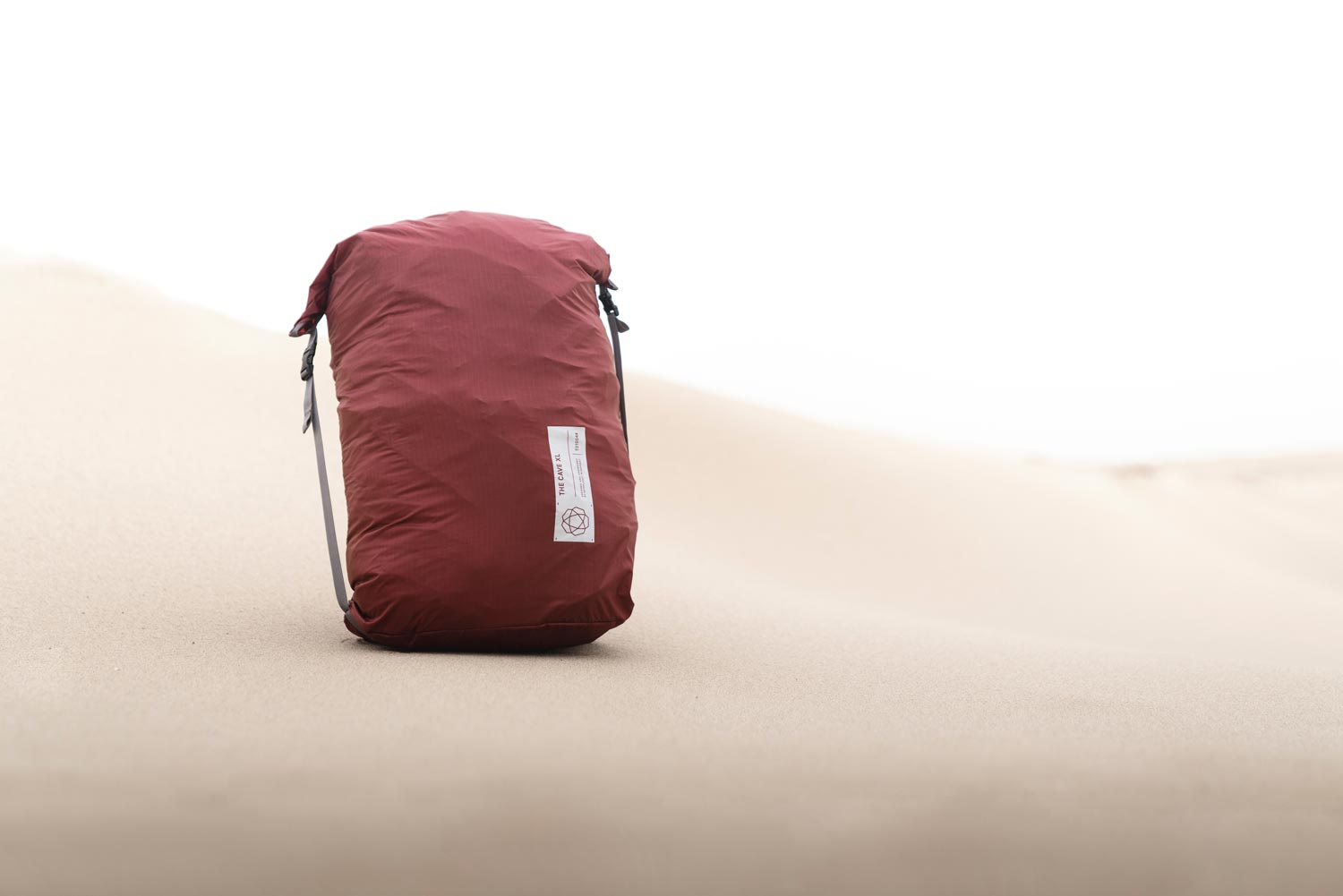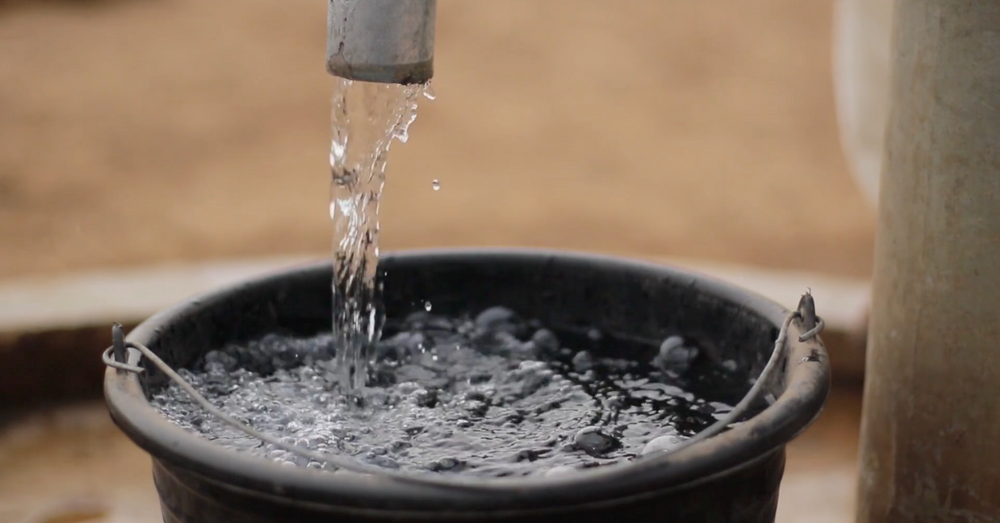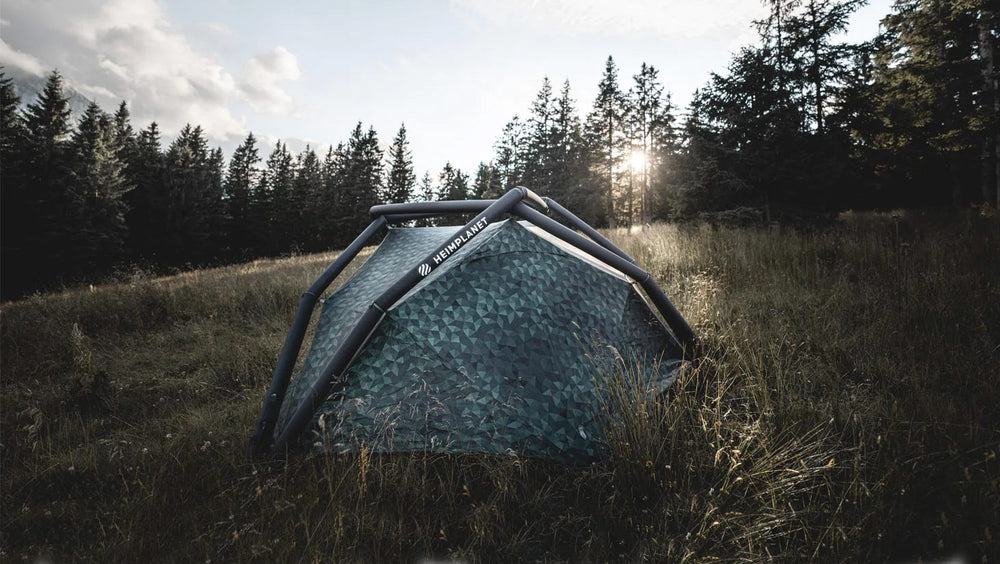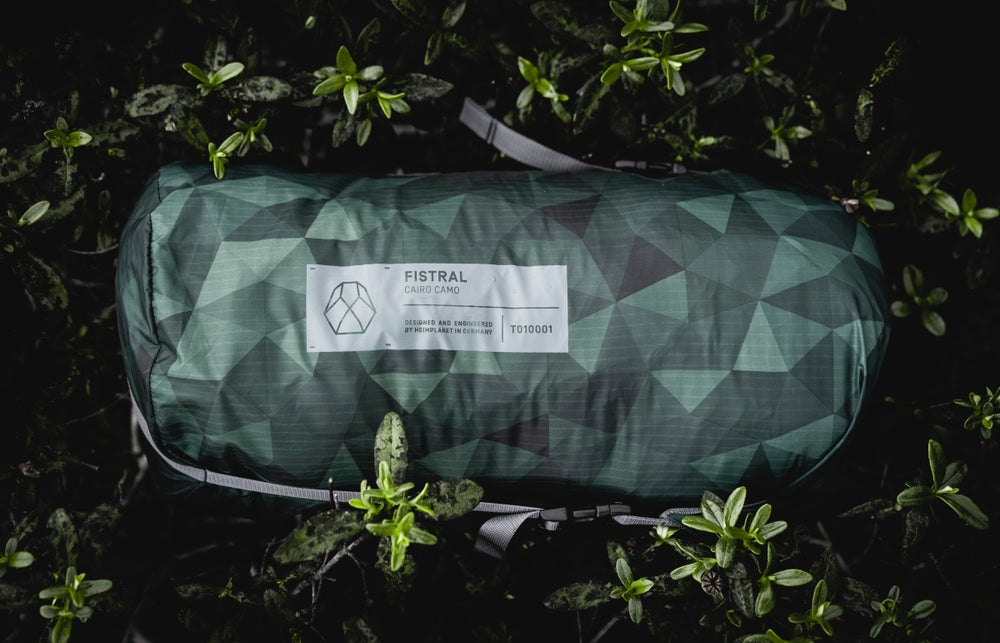Zelt richtig lagern
Uns ist Nachhaltigkeit sehr wichtig, deshalb sind unsere Zelte darauf ausgelegt Dich ein Leben lang zu begleiten. Für eine möglichst lange Lebensdauer und um Materialschäden zu vermeiden, ist die richtige Lagerung und Pflege deines Zeltes besonders wichtig.

Lagerung, die zählt
Die Saison neigt sich langsam dem Ende entgegen. Zeit für Zeltpflege und die richtige Lagerung, damit dein HEIMPLANET Zelt auch im nächsten Jahr wieder zuverlässig seinen Dienst versehen kann. Wir haben für Dich hilfreiche Tipps zur Lagerung und Pflege gesammelt. Nach Möglichkeit solltest Du sie jedes Mal beachten, wenn Du dein Zelt benutzt hast.

Schritt 1: Reinigung
Bestimmte Substanzen, denen dein Zelt ausgesetzt ist, können die Beschichtung des Zeltstoffes beschädigen. Dazu gehören unter anderem Meersalz, feiner Sand oder Vogelkot, aber auch Essensreste und Blätter. Deshalb ist es im ersten Schritt wichtig dein Zelt von innen und außen zu reinigen.
Fege das Zelt zunächst von außen mit einem Handfeger ab. Das gleiche solltest Du anschließend innen wiederholen. Entferne hartnäckige Verschmutzungen mit lauwarmem Wasser und einem milden Spülmittel. Auf aggressive Reinigungsmittel solltest Du verzichten und im Zweifel lieber zu einem speziellen Reiniger greifen, der extra für Zeltmaterialien geeignet ist, da Du sonst den Zeltstoff beschädigen kannst.


Schritt 2: Trocknen
Stelle sicher, dass dein Zelt vollständig trocken ist, bevor Du es für die Lagerung einpackst. Abgesehen von unangenehme Gerüchen, Stockflecken und Schimmel, die entstehen können, beschädigt Feuchtigkeit mit der Zeit die wasserabweisende Beschichtung deines Zelts und führt dazu, dass es undicht wird.
Um dem entgegenzuwirken, baue dein Zelt bei gutem Wetter für einige Stunden draußen in der Sonne auf. Das kannst Du natürlich, sofern Du über den Platz verfügst, auch in Innenräumen tun. Solltest Du dafür nicht die Möglichkeit bzw. den Platz haben, kannst Du das Zelt auch auf einer Wäscheleine trocknen lassen. Stelle auch sicher, dass die Abspannleinen und das restliche Zubehör trocken sind, bevor Du sie einpackst.


Schritt 3: Verpacken
Unsere Packsäcke sind der perfekte Aufbewahrungsort für dein HEIMPLANET Zelt. Du musst dein Zelt nicht ordentlich zusammenlegen. Loses Stopfen ist sogar vorteilhaft: Der Zeltstoff wird bei jedem Packvorgang an unterschiedlichen Stellen gefaltet - das beugt Materialermüdung vor.
Wenn Du dein Zelt über längere Zeit lagerst solltest Du es etwas lockerer verstauen. Gönne deinem Zelt deshalb etwas mehr Raum und komprimiere den Packsack nicht vollständig.
Du solltest dein Zelt übrigens nicht lose im Regal lagern, da der lose Zeltstoff den perfekten Unterschlupf für Ungeziefer bietet. Der Packsack dagegen ist ein perfekter Schutz vor Käfern, Spinnweben, Fliegendreck und Staub.


Schritt 4: Lagerung
Für die Lagerung deines Zelts sollten einen Ort aussuchen der kühl, trocken und frei von Ungeziefer ist. Gute Lagerplätze sind: Ein Schrank oder Regal in deinen Wohnräumen, unter deinem Bett oder ein beheizter Keller- oder Abstellraum.
Versuche Orte zu vermeiden, an denen es zu heiß werden kann (z.B. Dachboden, Kofferraum oder neben einem Heizkörper) sowie Räumen, in denen es frieren kann (z.B. Gartenhaus oder eine unbeheizte Garage).
Beim Lagerort solltest Du außerdem auf die richtige Luftfeuchtigkeit (unter 55%) achten. Bei hoher Luftfeuchtigkeit beginnen nämlich Schimmelsporen zu keimen. Feuchte Keller/Garagen oder das Gartenhaus sind deshalb kein geeigneter Lagerort für dein Zelt. Wohnräume, beheizte Keller und Garagen sind dagegen perfekt.
Dein Zelt mag es außerdem gerne dunkel. UV-Strahlung bleicht nicht nur den Zeltstoff aus, sondern macht ihn auf Dauer auch brüchig. Das kann bei auch schon nach kurzer Zeit passieren. Achte deshalb auf einen Lagerort, an dem es keine direkte Sonneneinstrahlung gibt.









